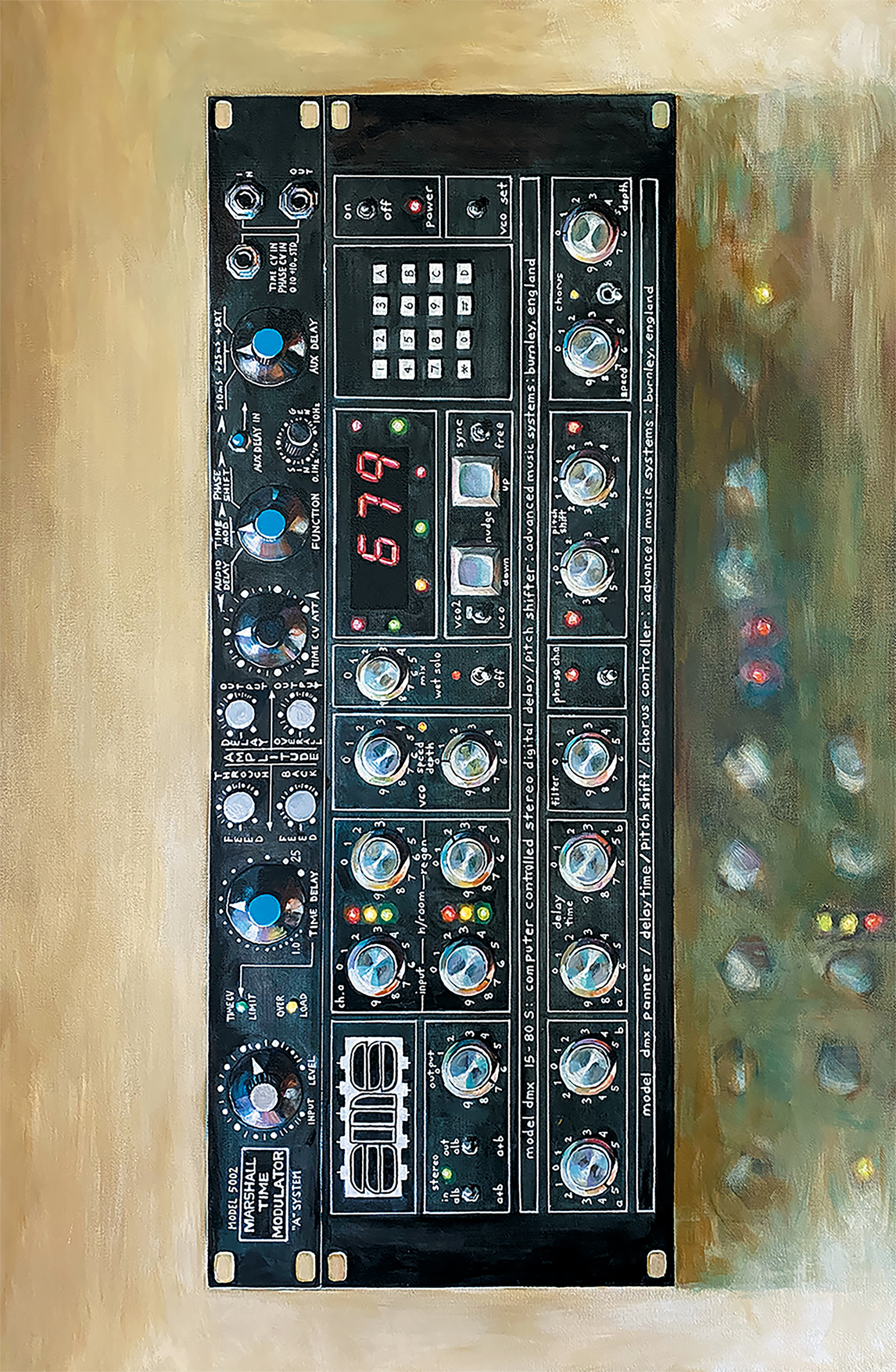During most of my adult life, the use of stompbox effects with my trumpet or my voice was frustrating, inconvenient, and unreliable, or some combination of these issues. I've wasted hours, days, and weeks playing around with various setups; Lo-Z to Hi-Z adapters, loop pedals with XLR inputs, vocal FX stompboxes with XLR inputs, little mixers with sends, and even a converter and a laptop. After exhausting these options, I even started toting around a little 500 Series lunchbox with a preamp/EQ. However, these setups suffer from unique imperfections such as fragility, not sounding good, lacking features or flexibility, or were simply too bulky or awkward for regular use. Now, after spending a week and half with Grace Design's ROXi and REX high fidelity mic preamp pedals, I'm elated! These deceptively utilitarian stompboxes have quickly earned prominence as permanent staples in my kit, and I can finally stop bringing my lunchbox everywhere I go.
Both preamp pedals share some key features. When I plugged a Shure SM7B into both the REX and ROXi, they each sounded crispy and warm. The SM7B takes a lot of gain to sound decent, so after turning up the input on the pedals I was glad to hear that I didn't need to add a Cloud Microphones Cloudlifter [Tape Op #85] to get beautiful clarity. That strong and clear foundation is further enhanced by a HPF switch at 75 Hz and high shelf and low shelf EQ knobs. Additionally, both pedals have 48V phantom power, which allowed me to mess around with my AKG 414 mic. This mic is great for vocals, but trumpets can sound somewhat unpleasant or harsh when using condensers, so the EQ options were extremely useful when shaping trumpet tones. The ground lift on both the REX and ROXi isn't necessarily an exciting feature, but after spending a few years playing in old bars, home studios, and clubs with variable power situations, I'm extremely grateful for it.
Both pedals have one XLR out and one 1/4-inch TS out, along with a send and return loop for effects. I was happy to discover that the XLR out and TS out do operate simultaneously. I am able to use these pedals to split my signal, which can be simultaneously sent to a mixer and also to a separate monitor, amp, or in-ear system. The ability to hear my own solos whilst on stage or in rehearsal has been compromised by loud bandmates or difficult stage setups. Using both outputs allows me the utility of having my own dedicated stage monitor, rather than being limited by a given setup. If all this functionality isn't enough, the REX and ROXi are super robust, solid, well-made pieces of metal, but they won't add a bunch of unnecessary weight to your pedalboard.
While either pedal is a must-have for any performer or studio musician in search of these features, there are some critical differences between the REX and ROXi. Firstly, their size differences are notable, with the REX being smaller and closer to the size of a typical stompbox. The larger ROXi has around double the footprint of the REX, but is certainly worth making room for if you want its many extra features. Other than this difference in size, the REX's input is limited to XLR, while the ROXi's input can be a mic or instrument via a combo jack. The ROXi also has a dedicated tuner output, so a tuner pedal will get signal whether the ROXi's mute switch is activated or not. This allows the performer to tune silently on stage or on-the-fly, without killing the music
The ROXi also has a dedicated output level control for the 1/4-inch amp output, which was super useful once I began to experiment with guitar amps. Anyone who enjoys playing electric guitar has likely experimented with their guitar's volume control knob and has observed the way it affects the tones and character of a given guitar amp. I found myself dialing up the ROXi's output level into my amp in order to pull out some wacky and distorted tones and dialing it back for cleaner ones. The ROXi's wet/dry control allowed me to mix my FX loop in and out, and two more EQ knobs than the REX let me sweep through midrange frequencies while cutting and boosting them along the way.
For those who want even more tweak-ability, the ROXi has some additional features. For instance, the HPF can be changed to cut at 150 Hz instead of 75 Hz. Also, the left footswitch can be configured to act as either a level boost or purely as a bypass FX switch. The ROXi also allows the level of the DI output to be changed. Finally, the ROXi can further justify its place on anyone's pedalboard by acting as a power supply unit for 9V pedals, up to 500 mA.
I can't say enough great things about the REX and ROXi. They sound beautiful, are super solid and well built, and offer an array of flexible solutions to problems I've been dealing with for years, both on stage and while recording in studios. These little green boxes have so much to offer horn players, string players, woodwind players, and singers. With the REX and ROXi at our feet, instrumentalists like us no longer need to glare jealously at our bandmates' pedalboards. We've got our own now.




_disp_horizontal_bw.jpg)